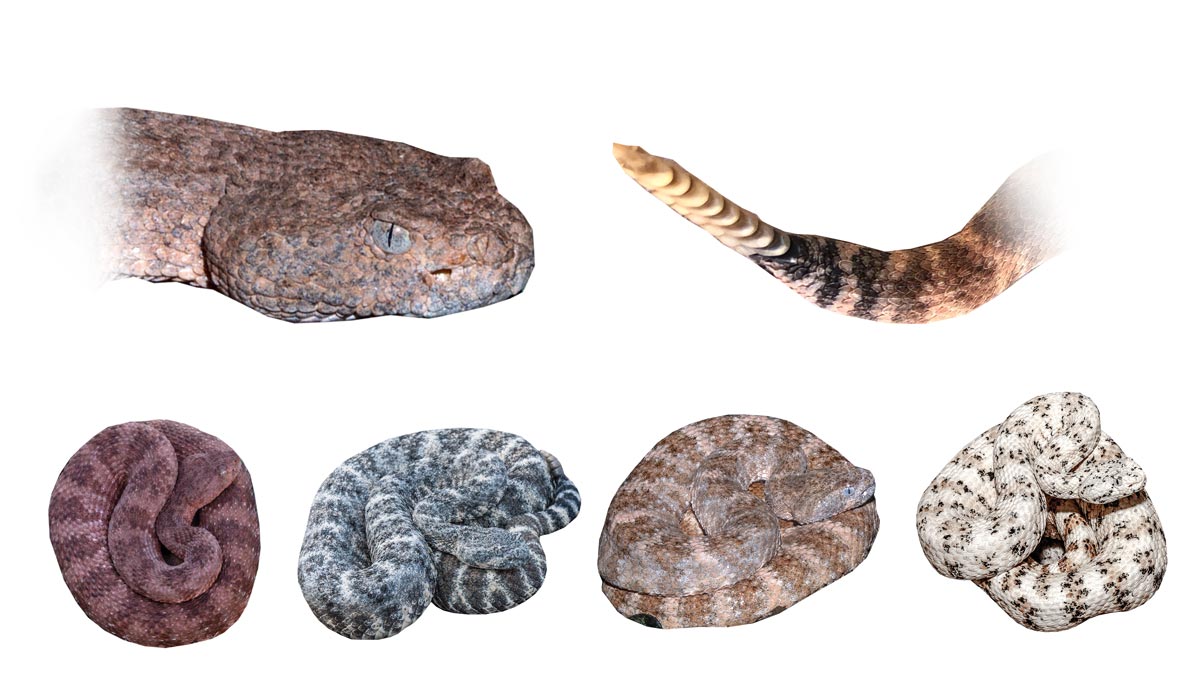
The Southwestern Speckled Rattlesnake is medium-sized rattlesnake, typically growing up to about 3', with some individuals approaching 4'. The species is notable for its extreme color variation, matching the color and pattern of the mountain on which it lives – each range being a slightly different characteristic variation. This color change can be extreme, from orange, red, and pink to white, grey, light blue, yellow, and any combined variation. In Phoenix, the grey and light-blue variation are found in the southern mountains (South Mountain, Sierra Estrella, White Tank Mountains). Those found in the rest of the valley (Phoenix Mountain Preserves, Camelback Mountain, Etc, Cave Creek, Thunderbird, etc.) are red, pink, or orange. It has a speckled appearance, consisting of broken bands and irregular mottling throughout the body. Its tail usually has a few black bands just before the rattle, differentiating it from the similar-looking Tiger Rattlesnake.
Distribution and Habitat
In Arizona, the Southwestern Speckled Rattlesnake is found from central Phoenix, west across the Sonoran Desert south of the rim, north into the western Grand Canyon, and south to the borders of Mexico and California. The eastern boundary in the region is approximately the Camelback/Mummy Mountain complex in central Phoenix. They are not found in the McDowell Mountains and east and do not occur in Tucson.
Behavior
Like most rattlesnakes, this species is primarily nocturnal and crepuscular, being most active at dawn, dusk, and during the night. During hot days, it tends to stay in the shade or in underground burrows to avoid the heat. It is solitary except during the mating season and tends to be relatively sedentary, often remaining within a small home range.
Conflict with humans
These rattlesnakes are frequently encountered by hikers in the popular city parks of interior Phoenix. They are specialists of rocky, steep terrain and associated drainages, which make up some of the most popular hiking destinations for Phoenix residents. Most hikers come across them in the early morning or just before dark in the spring and fall. During the hottest time of year, they aestivate in deep caves, nearly entirely nocturnal. They also are found at homes immediately adjacent to these rocky preserves, where they are most frequently found in association with summer aestivation activities, where they take advantage of foundation access and water sources.
In some areas, perhaps due to general unawareness of rattlesnake diversity, Southwestern Speckled Rattlesnakes are misidentified as other snakes. In the regions west of Phoenix, particularly Wickenburg to Kingman, they may be called "Mojave Red". They may be found in a pink coloration and mistakenly synonymized with the Grand Canyon Rattlesnake as "Grand Canyon Pink", in both the canyon and beyond. Arizona residents who have relocated here from California may refer to them as "Red Diamond" rattlesnakes, mistaking them for the reddish Red Diamond Rattlesnakes found in Southern California.
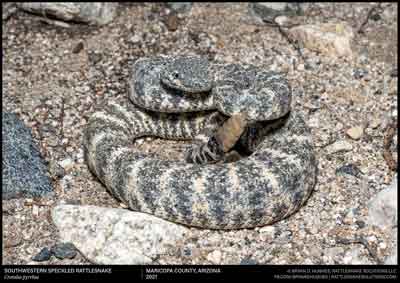
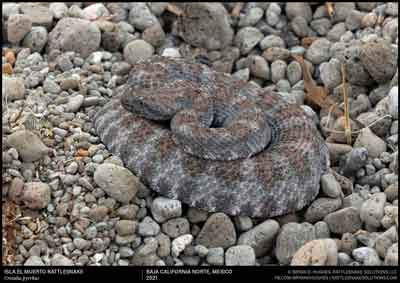
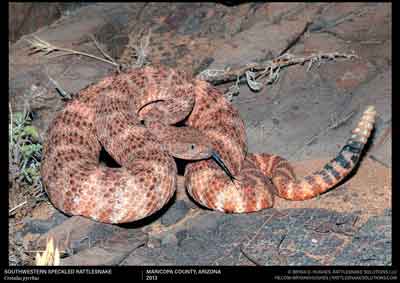
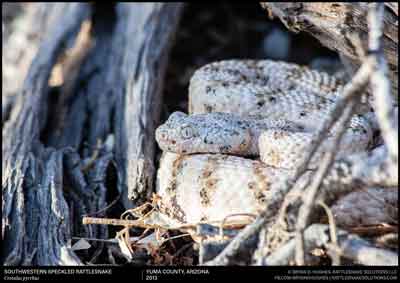
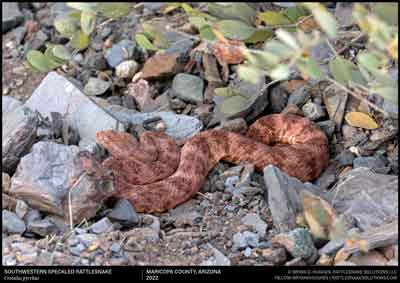
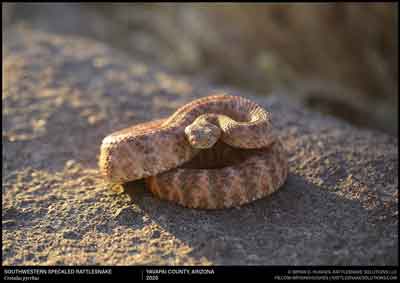
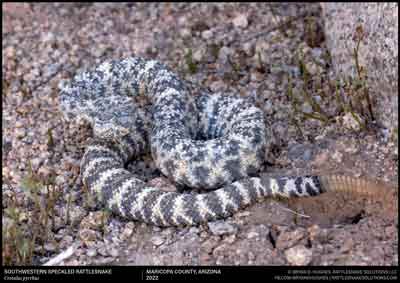
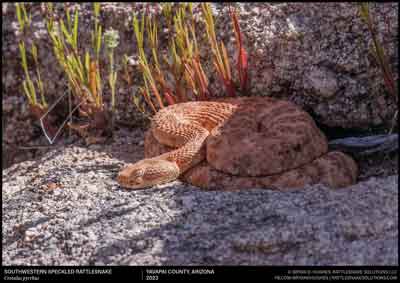
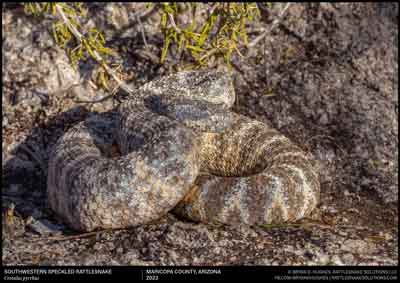
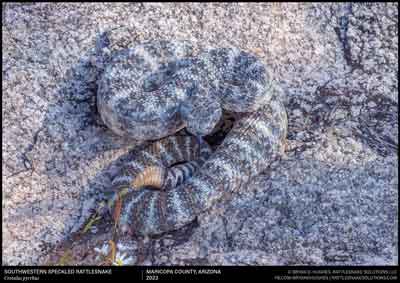
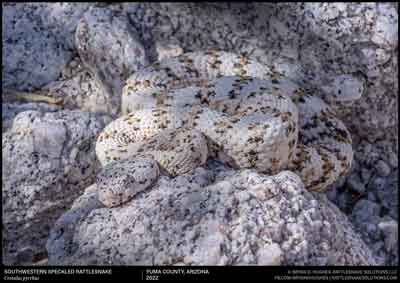
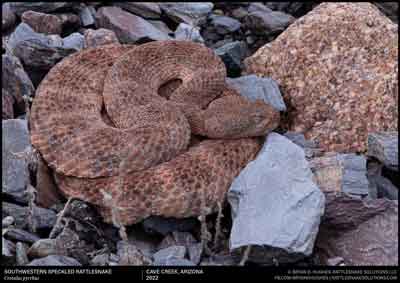
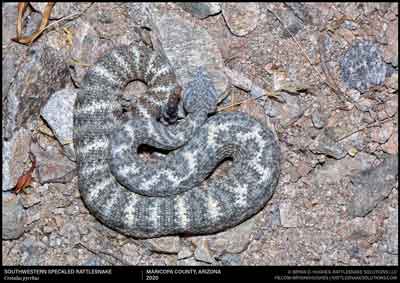
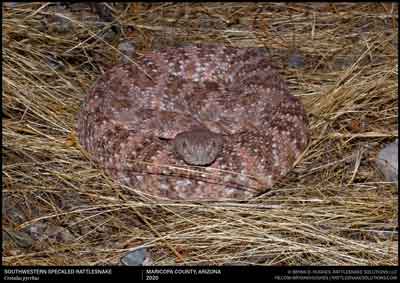
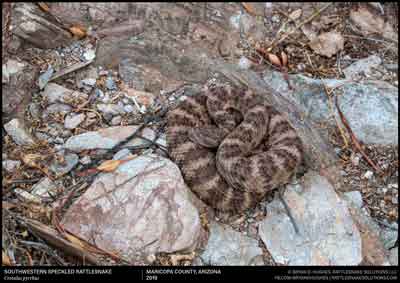
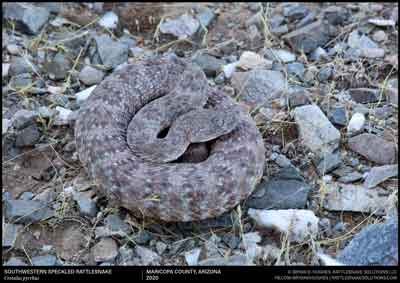
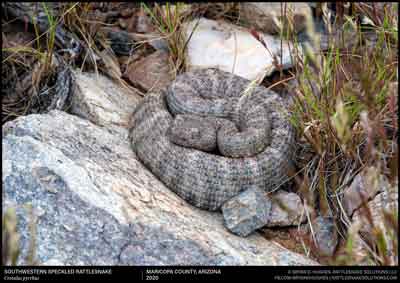
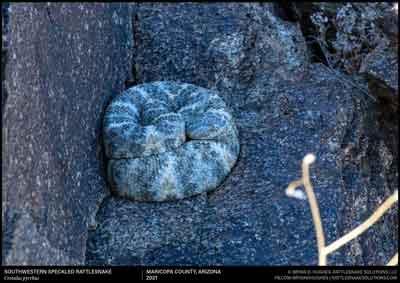
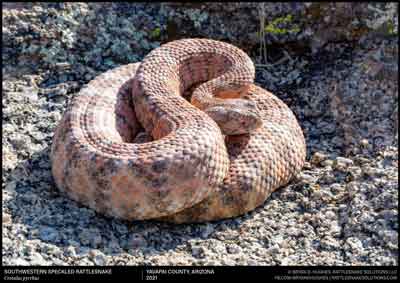
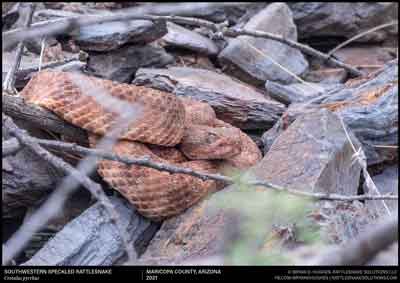
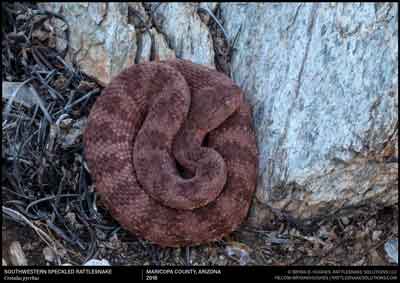
Confusion with Tiger Rattlesnakes
Southwestern Speckled Rattlesnakes are often confused with Tiger Rattlesnakes. The most obvious reason is the superficial similarity between the two. Both may be strongly banded, and they live side-by-side in many areas where they are commonly seen. It is notable and interesting that there seems to be a regional bias to identify either snake as a Tiger Rattlesnake. For instance, Tiger Rattlesnakes are seldom misidentified as Speckled Rattlesnakes, but Speckled Rattlesnakes are very often misidentified as Tiger Rattlesnakes. This is the case despite both species being relatively well-known. The reasons for this are unknown, but could be due simply to the cooler and more exotic-sounding name of the Tiger Rattlesnake.
How to tell a Speckled Rattlesnake from a Tiger Rattlesnake
Speckled Rattlesnakes have larger heads than Tiger Rattlesnakes, being more in line with the typical head-to-body ratio of rattlesnakes in general. Tiger Rattlesnakes, comparatively, have dramatically smaller heads that may not be strongly differentiated from the body.
Color can be useful in differentiating between the two as well. The majority of reported encounters come from popular city parks in the Phoenix area, where the color of Speckled Rattlesnakes are bright reds and oranges or a notable light grey and blue. Tiger Rattlesnakes in the region, conversely, are typically grey with darker grey bands. While brightly-colored pinkish Tiger Rattlesnakes do exist elsewhere in the state, this is rare in the areas where their ranges overlap.
Speckled Rattlesnakes also have a few black bands, sometimes black-and-white bands, similar to other desert rattlesnake species. Tiger Rattlesnakes lack these bands.
If you see a rattlesnake you think may be a Speckled Rattlesnake or Tiger Rattlesnake and are not sure, take a photograph and email it to id@rattlesnakesolutions.com with the location for confirmation.
Videos featuring this species:
- Dangerously Venomous
- Very Commonly encountered
- Avoid or relocate if found at a home
- Snake fencing very effective
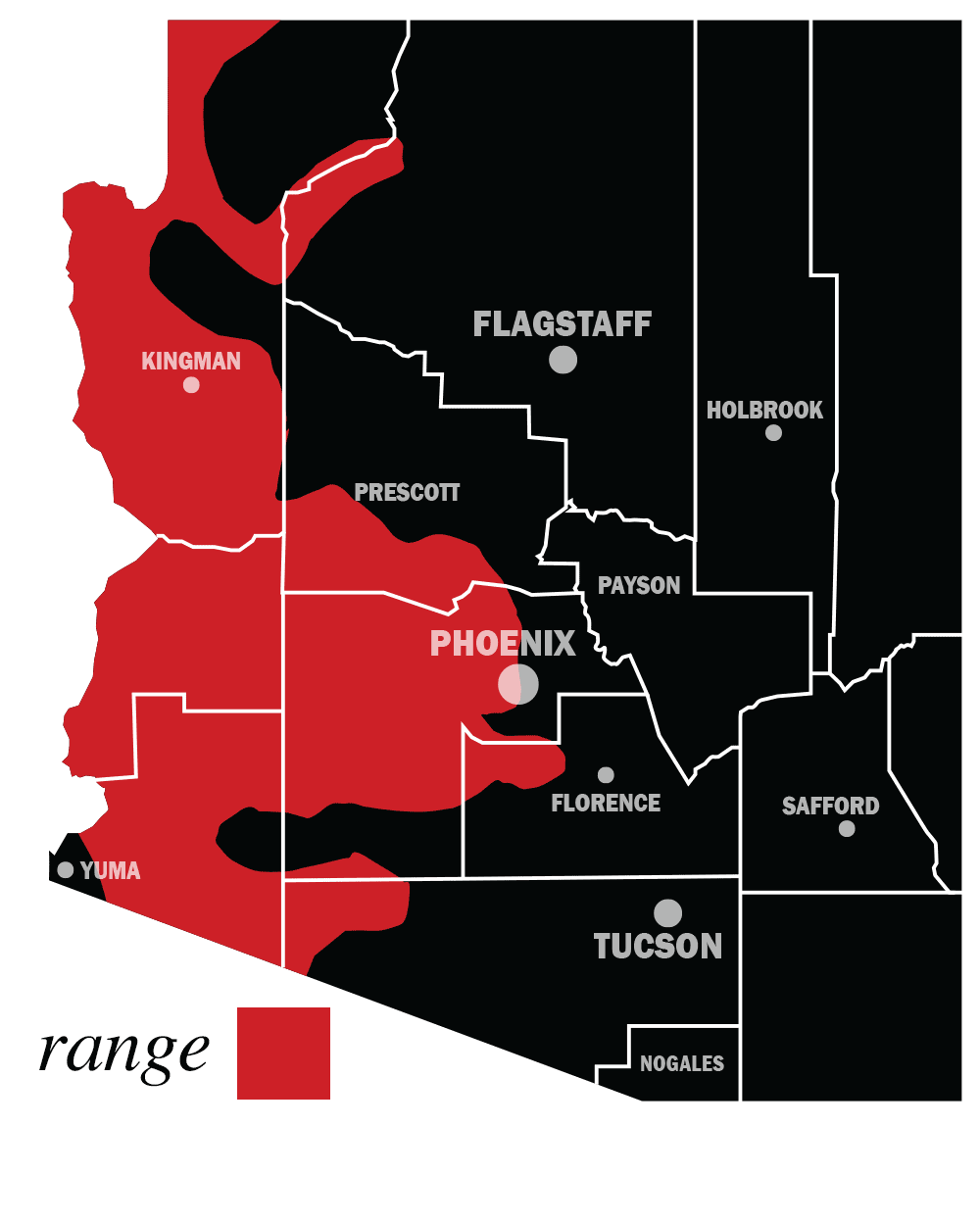
Often confused with:
Tiger Rattlesnake
Mojave Rattlesnake
Grand Canyon Rattlesnake
Articles:
Extreme Specialization of the Southwestern Speckled Rattlesnake